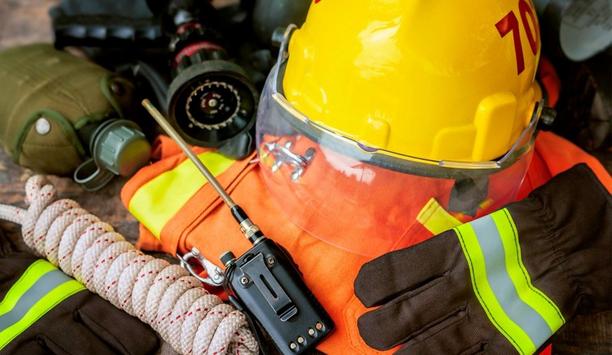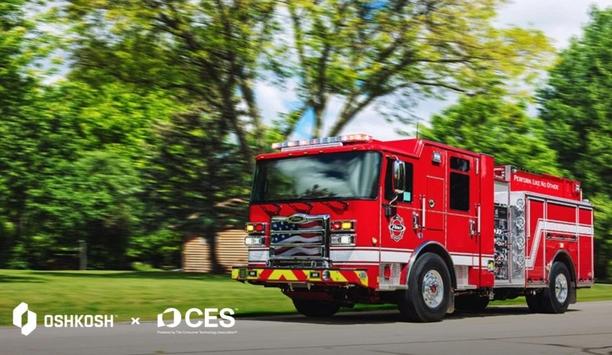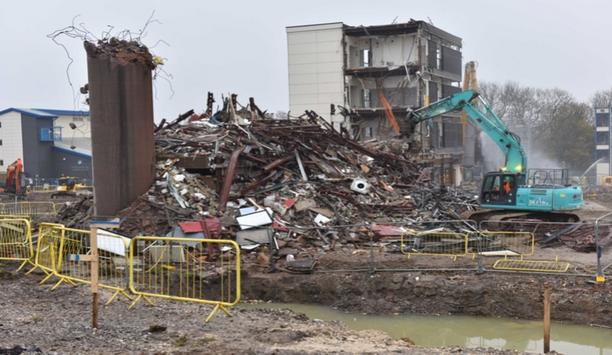Search and rescue (SAR) can encompass anything from rescuing an injured rock climber in Denali National Park, searching for people trapped in a collapsed building after an earthquake, to finding an Alzheimer’s patient that wandered away from their home. There are many facets of search and rescue and they all have their own needs and disciplines.
Search and Rescue by definition, is the search for and provision of aid to people who are in distress or imminent danger. The general field of search and rescue includes many specialty sub-fields, typically determined by the type of terrain the search is conducted over (wikipedia.org 2016).
6 main categories
Search and Rescue falls under 6 main categories. While all disciplines have different technical needs, they all serve the purpose of locating lost persons and rescuing them if they are in danger or injured.
- Mountain Rescue - Technical high angle rescue often involving ropes, rigging, and haul systems.
- Ground Search and Rescue - Missing hikers or persons. Occurs after a natural disaster,
- Urban Search and Rescue - Could occur after a natural disaster or man made disaster like gas explosion, building collapse, or terrorist attack.
- Cave Rescue - Occurs inside caves or grottos
- Combat Search and Rescue - Search for those displaced, lost, or kidnapped in combat
- Air-Sea and Swiftwater Rescue - Search in the oceans or rivers for capsized boat victims, people swept out to sea, or airplane crashes. Typically uses helicopters and/or boats.
Disaster or emergency
In a disaster or emergency, the need for lighting is very relevant
In a disaster or emergency, the need for lighting is very relevant. Often, people are lost at night or injured inside of a collapsed building with no power.
Search crews will go out after someone has not returned home at the end of the day and search through the night. Search and rescue operations can be very long affairs that start in the day and continue well into the night.
Lighting can be the difference between finding somebody before a snowstorm comes in and people dying in the wilderness due to a slow, protracted search. Let’s look at some ways that lighting is needed for search and rescue applications.
Problems and Conditions
Following are the problems and the conditions:
- Remote Locations: Often, people who require rescue are in remote, rugged locations that are difficult to access or traverse. It’s those adverse conditions that likely caused them to get lost or injured in the first place.
- Long hours in the dark: Search and Rescue operations often last several hours and sometimes days. When conditions permit, an operation will run through the night. Rescuers will face long hours in the dark of night, especially in the winter.
- Dark interior locations: Not all search and rescue operations take place at night. Many operations happen during the day but are in locations that are dark like abandoned or damaged buildings, culverts, deep canyons, forests, and caves. Even a rollover car accident presents dark conditions within the vehicle where it’s hard to see the extent of the damages and
- Portability: People requiring rescue are likely in remote areas far from roads, civilization, and power. Rescuers have to transport all their necessary tools deep into the backcountry or debris to access a victim. This could be as simple as carrying water and warm clothes to a hiker who is lost. It may require a large team to set up complex hauling systems to retrieve a rock climber out of a remote canyon or crevasse. Either way, all that equipment needs to be hauled to the rescue site and then taken back out.
- Dangerous Conditions: Search and rescue personnel have to work in the same conditions or environment that affected the victim they are searching for. Steep, rough terrain in the mountains or debris from a collapsed building or natural disaster can prove difficult and dangerous for rescue personnel to work in. It’s important for rescuers to avoid additional injuries from hazardous conditions or they will become liabilities to the mission.
- Self Sufficiency: A rescue site could be 5-10 miles back into the wilderness. Rescuers need to be self-sufficient and prepared for long hours on a search. It’s critical for rescuers to have enough clothing for rapidly changing conditions, food, and water to keep them fueled throughout the mission, and all the tools and equipment needed for the rescue. They do not have the option to just run back to the truck and get something, they must be able to carry everything needed for the rescue and for themselves.
- Fatigue and Exhaustion: The long duration and the physical demands of SAR operations can easily lead to fatigue and exhaustion. Rescuer fatigue can lead to mistakes and injuries. The smallest mistake can lead to additional injuries or complications that add valuable time to the operation.
- Personal Task Management: Especially in high-angle or technical rescue operations, rescuers have to set up Intricate and complex rigging and systems. They need to be able to clearly see and assess the equipment and conditions around them to set up safe redundant configurations or retrieve tools out of a pack.
Search and Rescue
Search and rescue (SAR) can encompass anything from rescuing an injured rock climber
Search and rescue (SAR) can encompass anything from rescuing an injured rock climber in Denali National Park, searching for people trapped in a collapsed building after an earthquake, to finding an Alzheimer’s patient that wandered away from their home. There are many facets of search and rescue and they all have their own needs and disciplines.
Search and Rescue by definition, is the search for and provision of aid to people who are in distress or imminent danger. The general field of search and rescue includes many specialty sub-fields, typically determined by the type of terrain the search is conducted over.
Catagories of search and rescue
Search and Rescue falls under 6 main categories. While all disciplines have different technical needs, they all serve the purpose of locating lost persons and rescuing them if they are in danger or injured.
- Mountain Rescue - Technical high-angle rescue often involving ropes, rigging, and haul systems.
- Ground Search and Rescue - Missing hikers or persons. Occurs after a natural disaster,
- Urban Search and Rescue - Could occur after a natural disaster or man-made disaster like gas explosion, building collapse, or terrorist attack.
- Cave Rescue - Occurs inside caves or grottos
- Combat Search and Rescue - Search for those displaced, lost, or kidnapped in combat
- Air-Sea and Swiftwater Rescue - Search in the oceans or rivers for capsized boat victims, people swept out to sea, or airplane crashes. Typically uses helicopters and/or boats.
Headlamp or helmet light
Headlamps are one of the most useful lights that a rescuer can have
Designed to be worn on the head or on a helmet. Headlamps are one of the most useful lights that a rescuer can have, providing hands free lighting.
Since it's mounted to head, it illuminates whatever you're looking at. Headlamps are ideal for task lighting, increasing situational awareness and short range search.
Flashlight or right angle light
Flashlights have been the norm in lighting for decades. They are easy to hold, one points them wherever one need and they feature a good tight beam that is suited for searching. Right angle lights are similar to standard flashlights but the head is angled 90° from the handle so it can be clipped to the body in a lower profile position. Flashlights are ideal for task lighting, personal search light for close proximity of 10- 50ft, and signaling.
Large spotlight
A spotlight is a more powerful light that has a stronger beam for longer range search. It is larger and heavier so it is not quite as portable as a smaller flashlight. But it does have a more powerful light and bigger batteries so it can run longer. Spotlights are useful from a command post or canyon edge to search long distances.
Scene lights
A spotlight is a more powerful light that has a stronger beam for longer range search
Scene lights are also larger, more powerful lights. They feature a wide, flood beam that will illuminate a large area. Several scene lights can be set up around an accident or disaster scene to provide an overall lighting for the scene.
They are ideal for illuminating incident command, medical tents and triage, staging and logistics areas, trails and walkways, hauling systems, access points.
Beacon lights
A beacon light is a strobing light worn on the body that makes a rescuer more visible to other rescuers, command or a drone. Also beneficial to put on rescue dogs to keep them more visible.
Drone lights
Drones are becoming a go-to tool for search and rescue operations. Lights mounted on the drone can light up the area for the camera on the drone, provide light for rescuers on the ground and serve as strobing lights for visibility to other aircraft.
consideration for lighting
Following are the consideration for lighting:
- Waterproof: Hurricanes, winter mountain rescues, caves, swiftwater rescues. These are just some of the situations where water is a predominant factor. Many times, rescuers don’t get to decide if they stay dry or get wet. Their lighting needs to be waterproof to withstand rain, submersion in water or just continued high humidity. An IPX7 waterproof rating will withstand submersion up to 10 feet for multiple hours.
- Durability: Equipment gets abused in SAR operations. Hauling, falling, transportation, and rough conditions all take their toll on equipment. Unfortunately, if the equipment is damaged and inoperable, a rescuer may not have the ability to exchange or fix it in the field. Lighting equipment that fails can leave a rescuer stranded in a dangerous spot needing assistance from someone else. That's pulling resources away from the original mission.
- Task lighting: The ideal light for task lighting is a headlamp. Many headlamps are designed with a strong, tight beam that projects long distances. Yet, one of the biggest uses for a headlamp is to illuminate the area within 2-6ft of the operator. A broad panoramic beam is more beneficial in the scenario because it illuminates a large area of light immediately in front of the rescuer. This makes it easier for the user to comfortably see more around them and reduces the fatigue caused by the bright beam area and the surrounding darkness.
- Batteries and Power: For smaller, personal lights, AA batteries are a common go-to battery. They are readily available in stores or gas stations. That is a bonus for search and rescue teams that are working in rural areas. Also, fire and police departments will often provide AA batteries for use in radios, lights, and other electronics. For larger scene lights, the power options are rechargeable batteries or gas-powered generators. Generator light has long been the standard for scene lighting. Battery-powered lights offer several advantages over generator lights.
- Silent operation - At Incident Command or medical areas, there is a lot going on and communication is critical. Generators are loud and force people to talk over them, thus increasing the possibility of miscommunication or stress.
- Cordless design - Generator lights require cords between the lights and generators. This introduces additional safety hazards and the extra time of laying cable and safe setup. Battery-powered lights have no cords that present tripping hazards.
- Portability: SAR operations are often dynamic with changes in weather or circumstance. New transformations can lead to Incident Command moving or different evacuation routes to be established. Lightweight, battery-powered lighting can be easily moved and restaged depending on the dynamic nature of the situation.
- Traffic safety: A vehicle that has driven off a road and down an embankment is a common SAR operation. Or directing disaster victims to safe shelter. In these cases, SAR workers may be working on roadways, vulnerable to distraught, distracted motorists. They need to be very visible to motorists and other first responders on the scene. In addition to bright colored reflective vests, it's advantageous to have some sort of strobing light to alert motorists of their presence.
- Medical: Often once the victim is found, they’ve sustained injuries. Proper lighting allows the rescuer to quickly assess injuries on a victim and begin treatment or call for assistance
- Color Options: Scene lighting that has color options can provide quick identification of different areas of Command such as Medical, Triage, Logistics, Supply or UAS ops.
Benefits of lights
The biggest benefit of lighting to rescuers is that it enhances their safety
The biggest benefit of lighting to rescuers is that it enhances their safety. Whether it's a powerful scene light illuminating a whole hillside or a personal headlamp providing immediate light on the trail in front of a rescuer, light enhances situational awareness and reduces the chance of mistakes and injuries.
A rescue operation can be a very stressful event. Hours are long even though the clock is ticking, often it's cold and the terrain can be challenging. A responder is required to do a multitude of tasks like rigging gear, treating people, and reading instruments.
If not fully illuminated, all tasks can be more difficult and frustrating. Over time, the stress level will increase, resulting in irritation and potentially hostility throughout the team.
By using proper lighting, the responder can complete routine tasks easier, thus reducing their overall stress and fatigue. This results in better morale and attitude of the crew.
Working faster
A responder can work faster with lighting. By seeing more clearly, they reduce their judgement time for all tasks. Even the smallest tasks like retrieving gear out of a backpack are made easier and quicker. Over the course of a large scale rescue, all of those small gains can add up to critical time savings overall.















